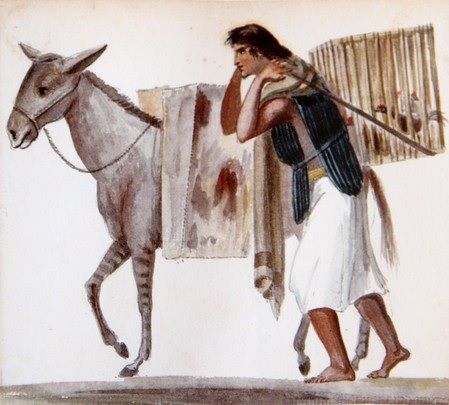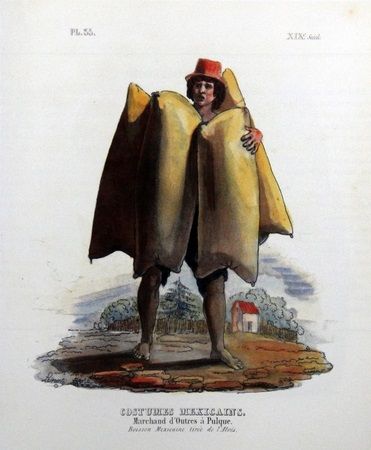Claudio Linati: the Italian count forgotten by history
About Claudio Linati who owes the classic image of the Mexican resting under a cactus tree, as well as other prints that portray iconic characters.

He lived in Mexico for only a couple of years (1825-1826), but that time was enough for the Italian Count Claudio Linati to make a series of contributions that changed the country.
Linati is credited with creating the first lithograph of independent Mexico, which he accomplished with the help of the lithographers José Gracida and the Italians Carlo Satanino and Luigi Brotti de Scagnello. Together with Fiorenzo Galli and the Cuban poet José María de Heredia they founded the newspaper El Iris which published the first Mexican lithography on February 4, 1826.
Claudio Linati would also publish other images that have transcended for centuries such as the Mexican resting under a cactus tree, the woman making tortillas (she makes or sells tortillas), the man carrying wooden loads on his back, the officer of the dragons (lithograph of the Mexican soldier of 1825) and that of the fathers of the Mexican fatherland: Hidalgo, Morelos, and Moctezuma, among others. The newspaper published the first Mexican political cartoon, La Tiranía, which was attributed to Linati.
However, the newspaper only published 40 issues because it was labeled as subversive, critical, and radical. Although it lasted a short time, it established a model for newspapers that printed satirical lithography of political and social topics. Some of its creators returned to Europe after the closure: Claudio Linati decided to return to Belgium, where he had arrived when the idea of investing in Mexico arose.
When Claudio Linati returned to Belgium, he published 48 lithographs about the newly born Mexican Republic that he compiled in a book entitled "Civil, Military and Religious Costumes of Mexico", published in 1828, in London two years later and later translated into Spanish and printed in Mexico, it includes the first inventory of Mexican types made by a foreign artist. The machinery was left to an engineer named Carlos Serrano and the San Carlos Academy.
Blue Blood
Marcos Claudio Marcelo Antonio Pompeyo Blas Juan Linati y Prevost was born on February 1, 1970, into a noble family in Carbonera de Parma, in the Duchy of Parma, for which he received a privileged education from the jurist Giuseppe Caderini.

At the age of 17, he joined the Society of Engravers of Parma and studied lithography, a recently invented image printing technique. He moved to Paris in 1809, where he studied painting, but when he became an officer in Napoleon's army, he was imprisoned in Hungary a year later. After his release, Claudio Linati lived in Spain and in 1818 returned to his homeland where he founded the Secret Society of the Great Chosen, Perfect and Sublime Mason, to resist tyranny.
After a pilgrimage through Spain where he acquired different properties, Claudio Linati was taken prisoner in Seo de Urgel and sent to Mont-Louis in France, after being liberated, on April 9, 1824, he was judged in absentia and sentenced to death by the Supreme Court of Parma for conspiracy against the government.
On March 6, 1825, Claudio Linati arrived at Alvarado, in the state of Veracruz, with the mission of inspecting the coast and looking for an anchorage point for the ships and machines of the mining companies. Once in the capital of the state, he studied lithography and a year later he moved to what is now Mexico City where, together with Gaspar Franchini, he installed the first machine for making lithographs in Mexico; his partner died during the process.
In December 1826 Claudio Linati embarked on the Conveyance in Veracruz, to New York, where he stayed a few weeks to move to Antwerp and from there to Brussels. In 1829 Claudio Linati received a passport to return to Mexico, which he did in 1832 where he died of yellow fever on December 11, 1832, three days after his return.




